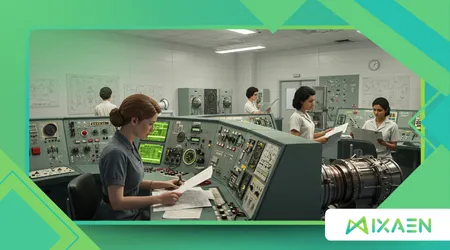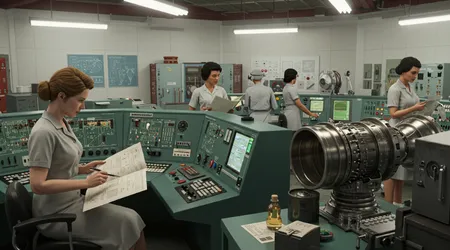The Forgotten Women Who Helped Launch Mankind Into Space

Forgotten women shaped humanity’s journey to the stars, their brilliance often overshadowed by history’s spotlight.
Anúncios
In the 20th century, as nations raced to conquer space, women like Katherine Johnson, Mary Jackson, and Dorothy Vaughan worked tirelessly behind the scenes, their calculations and innovations fueling monumental achievements.
This article uncovers their stories, weaving together the threads of courage, intellect, and resilience that propelled space exploration forward.
Why do we overlook the architects of our cosmic dreams? Their contributions, rooted in real-time challenges of their era, demand recognition in 2025 as we push toward new frontiers.
Space exploration thrives on collaboration, yet history often credits a select few. The forgotten women of NASA and other agencies broke barriers, defying societal norms to deliver breakthroughs.
From computing trajectories to engineering spacecraft, their work was pivotal.
This piece celebrates their legacy, blending historical context with modern relevance, and explores how their efforts resonate in today’s space race.
Let’s dive into the lives of these unsung heroines, whose intellect lit the path to the stars.
The Hidden Calculators: Women Who Crunched the Numbers
Before computers were machines, they were people often women. At NASA’s Langley Research Center, forgotten women like Katherine Johnson calculated rocket trajectories.
Her work ensured John Glenn’s 1962 orbit, a historic milestone. These “human computers” faced racial and gender barriers, yet their precision was unmatched.
Johnson’s calculations, done by hand, were critical for Apollo missions.
The West Area Computing Unit, largely African-American women, tackled complex math under pressure. Their work was vital for early spaceflights, yet they were rarely credited.
++ What If the Apollo Missions Happened with Today’s Technology?
Dorothy Vaughan led this team, mastering early computing languages to keep pace with technological shifts. Their contributions were foundational, yet their names faded from public view.
Recognition came late for these women. In 2016, Hidden Figures brought their stories to light, but many others remain obscure.
Their calculations were the backbone of NASA’s early successes, proving women’s indispensable role in space exploration. Today, their legacy inspires diversity in STEM fields, a critical focus in 2025.

Engineering the Future: Women in Spacecraft Design
Beyond calculations, forgotten women engineered the hardware that carried humans to space. Mary Jackson, NASA’s first Black female engineer, designed wind tunnel experiments.
Her work on aerodynamics shaped spacecraft safety and performance. Facing discrimination, she persevered, earning respect in a male-dominated field.
Women like JoAnn Morgan, a trailblazing instrumentation controller, ensured launch systems functioned flawlessly.
Morgan was the only woman in the control room during Apollo 11’s launch. Her expertise in telemetry was crucial for real-time mission success, yet her story is rarely told.
These women were pioneers, shaping the physical tools of exploration.
Also read: Building the First Space Elevator: Challenges and Breakthroughs
Their impact endures in 2025, as companies like SpaceX and Blue Origin hire diverse engineers. The Artemis program, aiming for lunar landings, owes a debt to these trailblazers.
Their work laid the groundwork for modern spacecraft, proving women’s technical prowess was never a question.
Breaking Barriers: Women in Leadership Roles
Leadership in space exploration wasn’t just male. Forgotten women like Dorothy Hoover rose to supervisory roles, guiding teams through uncharted challenges.
Hoover’s aerodynamic research influenced NASA’s early projects, yet her leadership is often overlooked. She navigated a system stacked against her, proving women could lead.
Nancy Grace Roman, dubbed the “Mother of Hubble,” championed the Hubble Space Telescope’s development. Her vision secured funding and scientific support, revolutionizing astronomy.
Roman’s leadership broke glass ceilings, yet her name is rarely celebrated alongside male counterparts. Her legacy shapes space science today.
Read more: Missions to Mars: The Path Toward Human Settlement
In 2025, women lead major space initiatives, from NASA’s Artemis to private ventures. The forgotten women of the past paved the way, showing leadership transcends gender.
Their stories remind us that diversity in decision-making fuels innovation, a lesson critical for today’s space race.
The Unsung Programmers: Coding the Cosmos
Programming was once a woman’s domain, yet forgotten women like Margaret Hamilton are rarely household names.
Hamilton’s software for Apollo’s guidance systems was groundbreaking. Her code ensured astronauts’ safe return, catching errors in real time during Apollo 11. Her work defined modern software engineering.
Other women, like the ENIAC programmers, laid early foundations for computing in space applications. Their meticulous coding enabled precise mission control, yet their contributions were sidelined.
These women were architects of digital exploration, their legacy embedded in every modern spacecraft’s code.
Today, as AI and automation drive space missions, their pioneering work resonates. The forgotten women who coded the cosmos remind us that software is as critical as hardware.
In 2025, their influence is seen in autonomous rovers and deep-space probes, pushing exploration further.
Cultural Impact: Inspiring Generations Beyond the Stars
The forgotten women of space didn’t just advance science; they inspired culture. Their stories, though buried, fueled movements for equality in STEM.
Hidden Figures grossed $230 million globally, showing public hunger for their narratives. Their resilience became a beacon for young women in science.
These women challenged stereotypes, proving intellect knows no gender or race. Their work influenced education, with STEM programs now emphasizing diversity.
In 2025, initiatives like NASA’s Artemis aim to land the first woman on the Moon, echoing their legacy. Their impact transcends science, shaping societal progress.
From classrooms to boardrooms, their stories ignite ambition. The forgotten women showed that barriers are meant to be broken, a message resonating in today’s push for inclusivity.
Their cultural footprint endures, urging us to honor their contributions by uplifting new voices.
The Modern Echoes: Women in Today’s Space Race

In 2025, the space race is vibrant, yet the forgotten women of the past still echo. NASA’s Artemis program plans to land a woman on the Moon by 2027, a milestone building on past heroines.
Women like Christina Koch, part of Artemis II, carry their torch, navigating new frontiers.
Private companies like Blue Origin and SpaceX employ women in key roles, from engineering to mission control.
Yet, diversity gaps persist only 20% of aerospace engineers are women, per a 2023 AIAA study. The forgotten women remind us to push for equity in these high-stakes fields.
Their legacy informs 2025’s focus on inclusivity. Programs like NASA’s CLPS involve women-led teams, driving lunar innovation.
By honoring past contributions, we ensure future missions reflect diverse talent, a necessity for humanity’s cosmic ambitions.
Table: Key Contributions of Forgotten Women in Space Exploration
| Name | Role | Contribution | Mission Impact |
|---|---|---|---|
| Katherine Johnson | Mathematician | Calculated Apollo 11 trajectories | Enabled lunar landing |
| Mary Jackson | Engineer | Aerodynamic wind tunnel experiments | Improved spacecraft design |
| Dorothy Vaughan | Computer Programmer | Led West Area Computing Unit | Advanced mission calculations |
| Nancy Grace Roman | Astronomer | Championed Hubble Space Telescope | Revolutionized astronomy |
| Margaret Hamilton | Software Engineer | Developed Apollo guidance software | Ensured safe lunar missions |
Real-Time Relevance: Why Their Stories Matter in 2025
The forgotten women of space exploration are not relics of history; their stories fuel 2025’s ambitions.
NASA’s budget cuts, reported by SpaceNews on June 4, 2025, threaten science missions, yet human exploration funding persists.
Women’s contributions remind us that diverse perspectives drive innovation, critical amid financial constraints.
Consider Sally, a fictional aerospace engineer inspired by Johnson, who designs lunar rovers in 2025. Or Maria, a coder echoing Hamilton, programming Mars probes.
Their work builds on past heroines, showing progress is cumulative. Like a constellation, each woman’s contribution forms a brighter whole, guiding future missions.
In 2025, as private companies and nations race to Mars, diversity is a strategic asset. The forgotten women proved talent transcends barriers, a lesson vital for collaborative missions.
Their stories urge us to amplify underrepresented voices, ensuring space exploration reflects humanity’s full potential.
Conclusion: Honoring the Past, Shaping the Future
The forgotten women who launched humanity into space deserve more than footnotes. Their intellect, resilience, and vision shaped the cosmos we explore today.
From Johnson’s calculations to Hamilton’s code, their work was the scaffolding of historic missions. In 2025, as we eye Mars and beyond, their legacy demands we champion diversity.
These women were not just cogs in a machine; they were its architects. Their stories, like stars obscured by city lights, shine brighter when sought.
By honoring them, we inspire future generations to reach for the stars. Let’s ensure their names are etched in the annals of space history, guiding us toward a more inclusive cosmic future.
Frequently Asked Questions
Who were the “human computers” at NASA?
They were women, often African-American, like Katherine Johnson, who calculated trajectories for early space missions, critical for Apollo and Mercury successes.
Why are these women’s contributions still relevant in 2025?
Their work laid foundations for modern missions like Artemis, proving diversity drives innovation, a key focus amid today’s competitive space race.
How can we honor these forgotten women today?
Promote STEM diversity, share their stories, and support initiatives like NASA’s CLPS, which involve women-led teams in lunar exploration.
What challenges did these women face?
They battled racial and gender discrimination, limited resources, and societal bias, yet their brilliance ensured mission success despite systemic barriers.
